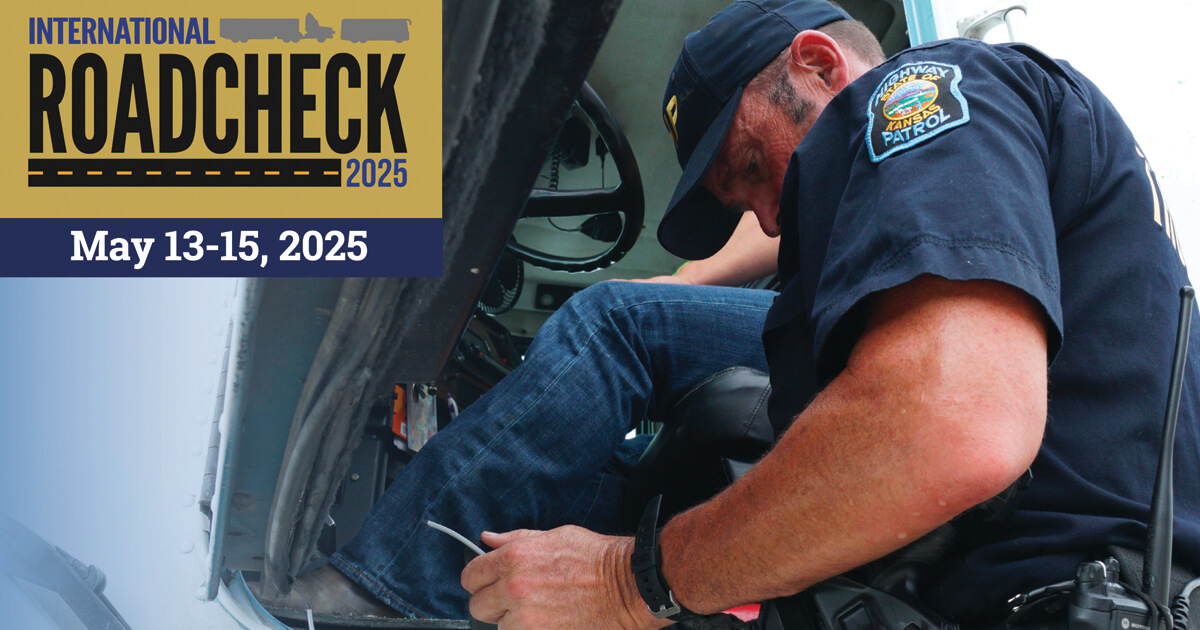The Commercial Vehicle Safety Alliance (CVSA) recently announced that this year’s International Roadcheck is scheduled for May 13-15, 2025. The International Roadcheck is an annual three-day enforcement initiative that emphasizes the importance of commercial motor vehicle (CMV) and driver safety through a blitz of high-visibility roadside inspections across North America. As this campaign approaches, it’s critical for trucking employers to understand how the event works and what this year’s emphasis will be.
Event Overview
During the event, an influx of CVSA-certified professionals take to the roads to conduct the following North American Standard (NAS) inspections on CMVs and drivers:
- Level I NAS inspections consist of 37 steps, including an examination of CMVs’ mechanical fitness and drivers’ operating requirements. This is the most common type of inspection during the event.
- Level II NAS inspections generally include everything that can be checked without physically getting under a CMV.
- Level III NAS inspections include a review of key driver requirements, such as carrying a commercial driver’s license, keeping necessary CMV documentation, ensuring cargo safety and security, and maintaining a record of duty status (RODS), among other action items.
- Level V NAS inspections are equivalent to Level I inspections, except that the drivers are not present. These inspections normally occur after road-related incidents or arrests.
Failed inspections among trucking employers’ fleets could result in significant penalties and out-of-service (OOS) violations, prohibiting employers from operating their affected CMVs until any identified issues have been fixed.
This Year’s Emphasis
Upon scheduling the International Roadcheck, the CVSA establishes an annual emphasis to highlight key topics to focus on during inspections. Last year’s emphasis was on controlled substance possession and tractor protection systems. This year’s emphasis is on driver operating requirements, namely hours of service (HOS) and CMV mechanical fitness.
Here’s a breakdown of these requirements:
- HOS—Under HOS requirements, drivers must maintain accurate records of their journeys and time spent behind the wheel by logging their on-duty and off-duty activities for each 24-hour period in a RODS. These requirements help ensure drivers aren’t spending too much time on the road, thus reducing the risk of fatigue. Incomplete or falsified logs could lead to OOS violations.
- Mechanical Fitness—Various mechanical components of CMVs are required to meet safe operating standards. One of the main components of a CMV’s mechanical fitness is its tires. Specifically, a vehicle’s tires must be properly inflated and have an appropriate tread depth. Tires with air leaks, tread separation, cuts, bulges, sidewall issues, faulty repairs or other types of damage are not permitted. CMVs with insufficient tires or other mechanical problems will be deemed unfit and removed from the road.
In light of this year’s emphasis, trucking employers should carefully review HOS and mechanical fitness requirements with their drivers and fleets and make adjustments as needed to ensure compliance.
For more information on the 2025 Roadcheck, visit CVSA online. And contact Delmarva’s Transportation Insurance Experts at Deeley Insurance Group today for more industry updates and risk management guidance.








